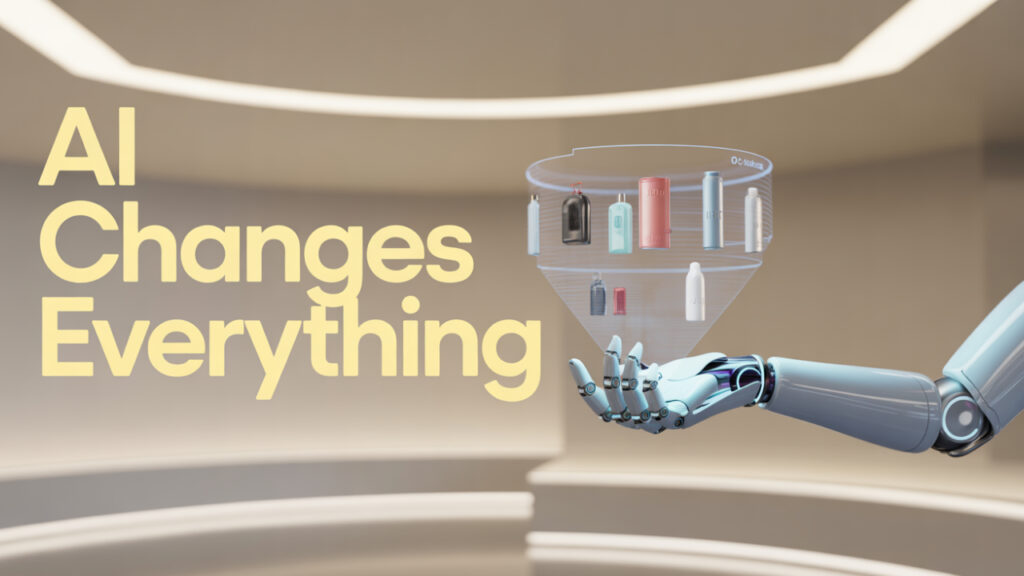From smart contact lenses to electronic tattoos, wearable technology is redefining the boundaries between humans and machines. Fueled by cutting-edge materials and intelligent sensors, today’s wearables are no longer just gadgets—they’re evolving into seamless extensions of our biology, enabling real-time health insights, enhanced interactivity, and personalized digital experiences.
🌍 A Rapidly Growing Industry
Wearables have revolutionized personal health and wellness. Devices that track sleep, activity, heart rate, and more have become part of everyday life—from fitness bands to smart rings and virtual reality glasses. The market is booming: according to Chemical Reviews, the global wearable tech industry was valued at over $55 billion in 2022, and is projected to surpass $142 billion by 2030.

This growth isn’t just about popularity. As wearables become mainstream, users expect more: thinner, lighter, stretchable, and skin-friendly devices that deliver accurate, real-time data while blending effortlessly into daily life. This has led to rapid innovation across fields like materials science, biomedical engineering, and human–machine interface design.
🔬 Materials Innovation: The Foundation of Next-Gen Wearables
At the heart of wearable evolution lies the science of advanced materials—from bioresorbable circuits to stretchable electronics that move with the body. These innovations are transforming wearables into smarter, safer, and more integrated systems.
💡 Bioresorbable Electronics
Imagine a medical sensor that works inside the body, collects health data, then dissolves harmlessly when it’s no longer needed—no surgery required. That’s the promise of transient electronics. These bioresorbable systems align with the body’s natural processes and represent a major leap in minimally invasive healthcare.
💧 Liquid Metal Circuits
Gallium-based liquid metals are another breakthrough. When combined with polymers, they create flexible, skin-conforming electronics known as liquid metal–polymer conductors (MPCs). These are being used to build “cyborg-like” wearables for health monitoring, neurostimulation, and even motion enhancement.

🧪 2D Materials for Flexible Devices
Ultra-thin two-dimensional (2D) materials like graphene are enabling the next wave of flexible electronics. With high conductivity and mechanical strength, these materials can be printed or layered into sensors, transistors, and energy storage units that seamlessly integrate with textiles, skin, and surfaces.
🩹 Wearables as a Second Skin
The future of wearables isn’t just smarter—it’s invisible, intuitive, and biologically integrated. Today’s research focuses on creating devices that feel like part of the body, both in form and function.
✒️ E-Tattoos
Electronic tattoos are ultra-thin, stretchable sensors that adhere like a second skin. These “e-tattoos” can monitor heart rate, hydration, muscle activity, and more—without discomfort or bulk. Applications range from remote healthcare to human–machine interaction, all delivered through an almost invisible interface.
👁️ Smart Contact Lenses
Smart lenses are bringing biometric sensing to the eye. By detecting biomarkers in tear fluid, these lenses can monitor conditions like diabetes, glaucoma, and even neurological disorders. They promise a new era of noninvasive, continuous health monitoring, with wireless communication built in.
⚡ Battery-Free Implantables
Next-gen wearables include implantable devices that run without traditional batteries. Using soft, biocompatible materials and energy-harvesting techniques, these systems provide high-resolution data from internal organs—enabling personalized medicine with less risk and greater comfort.
📡 State-of-the-Art Sensors
Sensor technology lies at the core of wearable functionality. As these components get smaller, more efficient, and more precise, they open the door to powerful new applications.
🩸 Glucose Sensing Without Pain
Electrochemical glucose sensors have evolved from finger-prick devices to noninvasive, real-time monitors. New-generation wearables use sweat or interstitial fluid for glucose readings, enabling continuous diabetes management and paving the way toward an artificial pancreas system.
💦 Sweat-Based Health Monitoring
Sweat contains valuable health information. Wearable sweat sensors now leverage advanced electrochemistry and flexible materials to track hydration, electrolyte balance, stress levels, and more. These sensors are poised to become key tools in preventive healthcare and precision diagnostics.
🖐️ Haptic Interfaces
Haptic human–machine interfaces (HHMIs) are redefining how we touch, control, and feel technology. By combining tactile feedback with motion tracking, these interfaces create immersive, responsive environments—ideal for virtual reality, robotics, and assistive technology.
🔮 The Future of Wearables
The trajectory of wearable technology is clear: it’s moving from external accessory to integrated body technology. The future holds:
Truly seamless form factors: Invisible wearables embedded in fabrics, skin, and even organs
AI-powered personalization: Devices that adapt in real-time to individual health data
Remote, autonomous healthcare: Real-time diagnostics without the clinic visit
Human–machine symbiosis: Intuitive interfaces that respond naturally to thought, gesture, and sensation
Wearables are not just monitoring us—they’re reshaping how we experience health, performance, and connectivity.
📘 Explore Further
For in-depth insights and detailed reviews on the latest wearable technologies, sensors, and materials, explore the full Virtual Thematic Issue in Chemical Reviews. This expert-curated collection dives deeper into the science and future potential of wearable innovation.
✅ Frequently Asked Questions (FAQs) About Wearable Technology
1. What is wearable technology?
Wearable technology includes smart devices worn on the body—like smartwatches, fitness bands, or even smart clothing. These gadgets track your health, physical activity, or help you interact with digital systems in real-time.
2. How do wearables help monitor health?
Wearable devices use small sensors to track things like:
Heart rate
Sleep quality
Step count
Blood glucose or oxygen levels
They collect this data and send it to your phone or a connected system for analysis.
3. What are e-tattoos and how are they used?
E-tattoos are ultra-thin, skin-friendly electronic stickers that look like tattoos. They stick directly on your skin and:
Monitor your body’s signals
Help with wound healing
Even generate power from body movement
They are almost invisible and very comfortable to wear.
4. Are smart contact lenses safe to use?
Smart contact lenses are designed using safe materials that won’t harm your eyes. They can:
Monitor your eye health
Detect diseases like diabetes or glaucoma
Send data wirelessly to your devices
Most are still in development, but early results are promising.
5. What are bioresorbable electronics?
These are tiny medical devices placed inside the body that dissolve naturally after use. They:
Monitor internal health
Perform temporary treatments
Don’t need to be removed with surgery
They’re great for reducing patient risks and recovery time.
6. Can wearable tech replace doctor visits?
No—wearables can help track health but they can’t replace professional medical advice. Use them to support your health goals, but always consult a doctor for diagnosis or treatment.
7. How is wearable tech used in sports and fitness?
Athletes and fitness enthusiasts use wearables to:
Track heart rate and calories
Monitor muscle recovery
Improve performance and prevent injuries
Some even use smart clothing and motion sensors for training.
8. Is my data safe with wearable devices?
Most brands offer data protection, but users should:
Read privacy settings
Avoid sharing personal data on public networks
Use strong passwords and updated apps
Always choose trusted brands for better security.
9. What does the future of wearable tech look like?
In the near future, expect:
Super thin, flexible wearables
Real-time health alerts
Smarter AI-powered devices
Seamless integration with smart homes and virtual worlds
Wearables will become more “invisible” and smarter than ever.
10. What are the main challenges in wearable tech?
Some ongoing issues include:
Short battery life
Sensor accuracy
Skin irritation or discomfort
Approval for medical use
Privacy and data concerns
Developers are working on solutions for all these problems.



